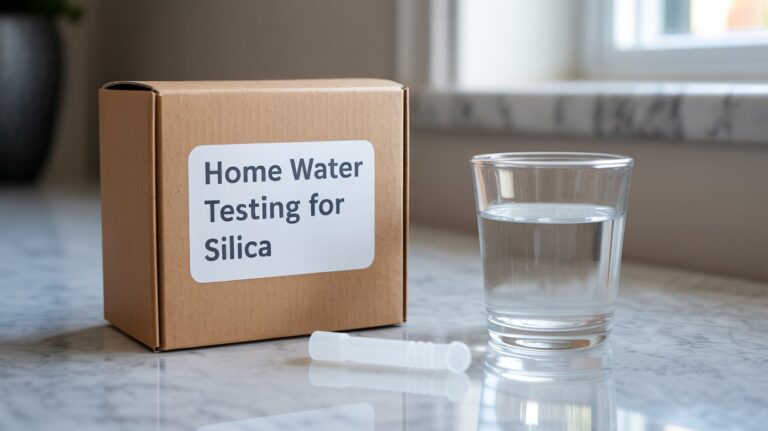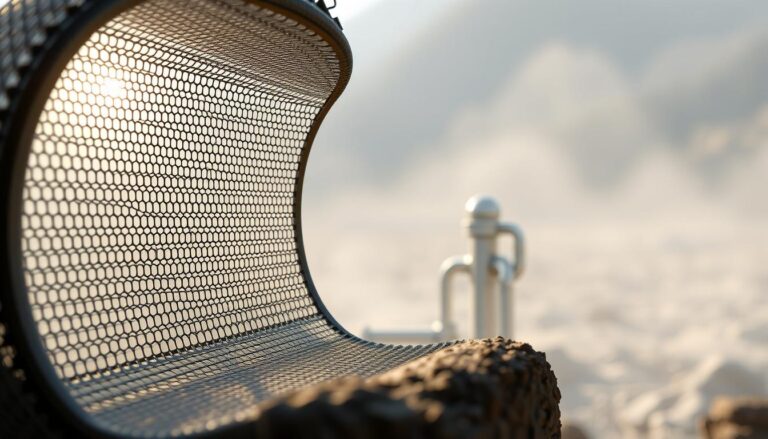How a Well Pitless Adapter Works
For many households relying on well water systems, a critical yet often overlooked component is the pitless adapter. But what makes it so vital for groundwater extraction?
A well pitless adapter plays a pivotal role in ensuring the safe and efficient operation of a well water system. It allows the water to be accessed without the need for a pit, enhancing the overall functionality of the system.
This article will delve into the workings of a well pitless adapter, its importance in well water systems, and how it contributes to effective groundwater extraction.
Key Takeaways
- Understanding the role of a pitless adapter in well water systems.
- The benefits of using a pitless adapter for groundwater extraction.
- How a pitless adapter enhances the safety and efficiency of well operations.
- The importance of proper installation and maintenance.
- Common issues associated with pitless adapters and their solutions.
What Is a Well Pitless Adapter?
As a fundamental element in well construction, the pitless adapter has revolutionized the way water is accessed and distributed from underground sources. A well pitless adapter is a device that connects the submersible pump and the well casing to the distribution piping, all while maintaining the integrity of the well by preventing contamination.
Definition and Purpose
A pitless adapter is designed to provide a secure, sanitary, and frost-protected connection between the well casing and the water distribution system. Its primary purpose is to eliminate the need for a well pit, which can be a source of contamination and requires significant maintenance. By doing so, it enhances the overall safety and efficiency of the well water system.
The pitless adapter mechanism is engineered to be durable and reliable, often featuring materials resistant to corrosion and capable of withstanding the underground environment. This component is crucial for the proper functioning of modern water well systems.
Historical Development of Well Components
The evolution of well components, including the pitless adapter, reflects advancements in water supply technology. Historically, wells required pits for accessing and connecting the distribution piping, which posed risks of contamination and freezing. The introduction of pitless adapters marked a significant improvement, enhancing both the safety and functionality of well systems.
Over time, the design and materials used in wellhead components like pitless adapters have evolved to address various challenges, including corrosion resistance and durability. Modern pitless adapters are designed to be more efficient, secure, and environmentally friendly.
| Component | Function | Material |
|---|---|---|
| Pitless Adapter Body | Main structural component | Stainless Steel or PVC |
| Sealing Elements | Prevents leakage and contamination | Rubber or Synthetic Materials |
| Connection Mechanisms | Links to well casing and distribution piping | Metal or High-Density Plastic |
The Importance of Pitless Adapters in Modern Well Systems
In modern well systems, pitless adapters are indispensable components. They significantly enhance the functionality and safety of groundwater extraction systems. The use of pitless adapters has become a standard practice in water well maintenance, particularly in regions prone to freezing temperatures.
The benefits of pitless adapters can be broadly categorized into two main areas: frost protection and sanitary/safety advantages. Let’s delve into these benefits to understand their importance in modern well systems.
Frost Protection Benefits
One of the primary advantages of pitless adapters is their ability to protect well systems from frost damage. By allowing the well pipe to exit the casing below the frost line, pitless adapters prevent water inside the pipe from freezing. This is particularly crucial in colder climates where freezing temperatures can cause significant damage to well components.
Frost protection benefits include:
- Prevention of pipe bursts due to ice formation
- Reduced risk of well casing damage from frost heaving
- Continuous operation of the well system during winter months
Sanitary and Safety Advantages
Pitless adapters also offer significant sanitary and safety advantages. By eliminating the need for a pit or above-ground well house, they reduce the risk of contamination and improve overall well safety.
Sanitary and safety advantages include:
- Reduced risk of surface water contamination
- Minimized access for animals or debris that could contaminate the well
- Improved safety by removing the need for a potentially hazardous pit or well house
The following table summarizes the key benefits of pitless adapters in modern well systems:
| Benefit Category | Specific Advantages |
|---|---|
| Frost Protection | Prevents pipe bursts, reduces casing damage, ensures continuous operation |
| Sanitary and Safety | Reduces contamination risk, minimizes animal/debris access, improves safety |
Components of a Pitless Adapter System
A pitless adapter system consists of several key components that work together to provide a reliable and frost-protected connection between the well casing and the water supply line. Understanding these components is essential for the proper installation, maintenance, and troubleshooting of the system.
Main Body and Housing
The main body and housing of a pitless adapter are typically made from durable materials such as stainless steel or brass, which provide resistance to corrosion and ensure longevity. The housing encloses the internal mechanisms and protects them from environmental factors.
Connection Mechanisms
The connection mechanisms of a pitless adapter are critical for securing the adapter to the well casing and connecting it to the submersible pump. These mechanisms often involve clamp-on or weld-on designs, with some models featuring threaded connections for added security.
Sealing Elements and Materials
Sealing elements, such as O-rings or gaskets, are used to create a watertight seal between the pitless adapter and the well casing. The materials used for these seals are chosen for their durability and resistance to water and other environmental factors.
| Component | Material | Function |
|---|---|---|
| Main Body | Stainless Steel/Brass | Provides structural integrity |
| Connection Mechanisms | Metal/Plastic | Secures adapter to well casing |
| Sealing Elements | Rubber/Plastic | Creates watertight seal |
By understanding the components of a pitless adapter system, users can better appreciate the complexity and importance of these devices in well water systems. Proper maintenance and inspection of these components can help prevent failures and ensure the longevity of the system.
How Does a Well Pitless Adapter Work?
A well pitless adapter operates on a straightforward yet efficient principle that ensures safe groundwater extraction. It is a critical component in modern well systems, providing a secure connection between the submersible pump and the distribution piping above ground.
Basic Operating Principles
The basic operating principle of a pitless adapter involves creating a secure, watertight connection below the frost line, thus preventing freezing and potential contamination. This is achieved through a combination of design elements and materials.
Pressure Management
Effective pressure management is crucial for the operation of a pitless adapter. It must withstand the water pressure from the submersible pump while maintaining a leak-proof seal. Proper pressure management ensures the longevity of the well system.
Water Diversion Mechanics
The water diversion mechanics of a pitless adapter involve directing water from the well casing to the surface distribution system. This is typically achieved through a specially designed outlet that connects to the household or irrigation system.
Integration with the Well Casing
The integration of a pitless adapter with the well casing is a critical aspect of its operation. The adapter is typically attached to the well casing through a clamp-on or weld-on mechanism, ensuring a secure and stable connection.
Underground Connection System
The underground connection system of a pitless adapter is designed to provide a secure and sanitary link between the submersible pump and the surface distribution piping. This system is crucial for maintaining the integrity of the well and preventing potential contamination.
| Component | Function | Material |
|---|---|---|
| Main Body | Housing for the adapter’s internal mechanisms | Corrosion-resistant materials (e.g., stainless steel, brass) |
| Sealing Elements | Provides a watertight seal | Rubber or synthetic materials |
| Connection Mechanisms | Links the adapter to the well casing and distribution piping | Metal (e.g., steel, brass) or durable plastics |
Types of Pitless Adapters Available on the Market
Understanding the different types of pitless adapters is crucial for selecting the right one for your well. The variety in pitless adapters caters to different well configurations and system requirements, ensuring that there’s a suitable option for every well water system.
Clamp-on vs. Weld-on Models
Pitless adapters are primarily categorized into clamp-on and weld-on models based on their installation method. Clamp-on models are favored for their ease of installation and flexibility, as they don’t require permanent welding to the well casing. This feature makes them ideal for rental or temporary well setups. On the other hand, weld-on models provide a more permanent and secure connection, making them suitable for long-term well installations where the adapter won’t need to be removed or adjusted frequently.
- Clamp-on models offer ease of installation and flexibility.
- Weld-on models provide a secure, permanent connection.
Compression vs. Threaded Designs
Another significant differentiation among pitless adapters is between compression and threaded designs. Compression adapters create a seal by compressing a gasket or seal against the well casing, offering a reliable and leak-resistant connection. Threaded adapters, however, connect directly to the well casing or pump discharge through threaded connections, providing a straightforward installation process. The choice between these designs depends on the specific requirements of the well system and the preference of the installer.
- Compression adapters provide a leak-resistant seal.
- Threaded adapters offer a straightforward installation.
Material Variations and Considerations
The material composition of pitless adapters is another critical factor, with options including brass, stainless steel, and plastic. Brass adapters are valued for their corrosion resistance and durability, making them suitable for a wide range of well environments. Stainless steel adapters offer high strength and resistance to corrosion, ideal for wells in harsh or corrosive environments. Plastic adapters, while less common, can be used in specific applications where metal adapters are not necessary or could be detrimental.
When choosing a pitless adapter, it’s essential to consider the material’s compatibility with the well water chemistry and the overall system design to ensure longevity and reliability.

Step-by-Step Installation Process
A well-installed pitless adapter is essential for maintaining the integrity of your well water system. This section will guide you through the crucial steps involved in installing a pitless adapter, ensuring a safe and efficient well operation.
Pre-Installation Preparations
Before diving into the installation, it’s crucial to prepare the site and gather all necessary materials. This includes inspecting the well casing for any damage or debris, selecting the appropriate pitless adapter model for your well system, and ensuring you have all the required tools and safety equipment.
Professional vs. DIY Installation Considerations
Deciding whether to hire a professional or undertake the installation yourself depends on several factors, including your level of expertise, the complexity of your well system, and local regulations. While a DIY installation can save costs, a professional ensures compliance with safety standards and potentially avoids costly future repairs.
Installation Techniques
The actual installation involves several key steps. First, the pitless adapter must be properly aligned with the well casing. This is followed by securing the adapter in place and ensuring a watertight seal.
Proper Alignment Methods
Alignment is critical to prevent leaks and ensure the longevity of the well system. Use measuring tools and visual inspections to align the pitless adapter correctly with the well casing.
Sealing and Securing
Once aligned, the pitless adapter must be securely fastened to the well casing. This involves using the appropriate sealing materials and tightening mechanisms to prevent any water leakage or contamination.

Post-Installation Testing
After installation, it’s essential to test the system to ensure there are no leaks and that the pitless adapter is functioning as expected. This involves checking the water pressure, inspecting for any signs of leakage, and verifying the overall performance of the well system.
| Installation Step | Key Considerations | Potential Issues |
|---|---|---|
| Pre-Installation Preparations | Inspect well casing, select appropriate adapter model | Damage to well casing, incorrect adapter model |
| Installation Techniques | Proper alignment, sealing, and securing | Leaks, contamination, system failure |
| Post-Installation Testing | Check for leaks, verify system performance | Undetected leaks, system malfunction |
Connecting Your Submersible Pump to the Pitless Adapter
To ensure your well operates effectively, the submersible pump must be correctly connected to the pitless adapter. This connection is crucial for the overall performance and longevity of your well system.
Proper Connection Methods
Properly connecting your submersible pump to the pitless adapter involves several key steps. First, you’ll need to understand the components involved and their roles in the system.
Drop Pipe Connections
The drop pipe is a critical component that connects the submersible pump to the pitless adapter. Ensure it’s properly sized and securely attached to both the pump and the adapter to prevent leaks and maintain system pressure.
Electrical Wiring Considerations
Electrical wiring for the submersible pump must be done correctly to ensure safe and efficient operation. Use the appropriate gauge wire and follow the manufacturer’s instructions for wiring the pump to the control box and other electrical components.
Common Connection Mistakes to Avoid
When connecting your submersible pump to the pitless adapter, there are several common mistakes to watch out for, including improper sizing of the drop pipe, incorrect electrical wiring, and failure to secure connections properly.
| Mistake | Consequence | Prevention |
|---|---|---|
| Improper drop pipe sizing | Reduced system efficiency, potential for damage | Choose the correct size according to the manufacturer’s specifications |
| Incorrect electrical wiring | Safety hazards, pump malfunction | Follow the manufacturer’s wiring diagram and use appropriate gauge wire |
| Insecure connections | Leaks, system failure | Tighten all connections securely and check for leaks |
Safety Precautions During Connection
Safety should always be your top priority when working with electrical and mechanical components. Ensure the power is off before making electrical connections, and use protective gear when handling potentially hazardous materials.
Maintenance and Troubleshooting of Pitless Adapters
Understanding how to maintain and troubleshoot pitless adapters can significantly enhance the performance of your well. Regular maintenance is crucial to prevent failures and ensure the longevity of your well water system.
Regular Maintenance Schedule
To maintain your pitless adapter effectively, it’s essential to follow a regular maintenance schedule. This includes inspecting the adapter for signs of wear, checking the sealing elements for any damage, and ensuring that all connections are secure. Regular inspections can help identify potential issues before they become major problems.
Signs of Pitless Adapter Failure
Recognizing the signs of pitless adapter failure is critical to preventing more extensive damage to your well system. Common indicators include leaks, reduced water pressure, and unusual noises from the well or pump. If you notice any of these signs, it’s crucial to take immediate action.
DIY Troubleshooting Tips
For minor issues, DIY troubleshooting can be an effective way to resolve problems with your pitless adapter. Start by checking the adapter’s connections and seals. If you’re experiencing leaks, inspect the sealing elements for damage or wear. Replacing worn-out seals can often resolve leakage issues.
When to Call a Professional
While DIY troubleshooting can address some issues, more complex problems require professional assistance. If you’re unsure about the cause of the problem or if your troubleshooting efforts don’t resolve the issue, it’s time to call a professional. They can provide a thorough diagnosis and perform the necessary repairs to get your well system back in operation.

| Maintenance Task | Frequency | Importance Level |
|---|---|---|
| Inspect adapter for wear | Every 6 months | High |
| Check sealing elements | Every 3 months | High |
| Verify connection security | Every 3 months | Medium |
Pitless Adapters vs. Alternative Well Solutions
When it comes to groundwater extraction, the choice between pitless adapters and traditional well systems is crucial. This section will explore the differences between pitless adapters and alternative well solutions, providing a comprehensive comparison.
Traditional Well Pit Systems
Traditional well pit systems involve constructing a pit around the well casing to house the well components. This method has been used for decades but comes with its own set of challenges, including the risk of frost damage and contamination.
Key characteristics of traditional well pit systems:
- Often require more maintenance due to the potential for frost damage
- Can be more susceptible to contamination
- Typically involve more labor and materials for construction
Cost-Benefit Analysis of Different Approaches
A cost-benefit analysis is essential when deciding between pitless adapters and traditional well pit systems. The following table summarizes the key differences:
| Feature | Pitless Adapters | Traditional Well Pit Systems |
|---|---|---|
| Frost Protection | Excellent | Poor |
| Sanitary Safety | High | Moderate |
| Installation Cost | Moderate | High |
| Maintenance Requirements | Low | High |
In conclusion, while both pitless adapters and traditional well pit systems have their place in well water systems, the benefits of pitless adapters, including improved frost protection and reduced maintenance, make them a compelling choice for many applications.
Conclusion: The Vital Role of Pitless Adapters in Well Water Systems
Pitless adapters play a crucial role in well water systems, providing a secure and sanitary connection between the well casing and the distribution piping. Understanding how a well pitless adapter works is essential for maintaining efficient and safe groundwater extraction.
The pitless adapter mechanism is designed to prevent frost damage and contamination, ensuring a reliable water supply. By integrating with the well casing and distribution piping, pitless adapters minimize the risk of leaks and other issues that can compromise well water systems.
In well water systems, pitless adapters are a vital component that requires careful installation, maintenance, and troubleshooting. By recognizing the importance of pitless adapters and following best practices for their use, well owners can enjoy a reliable and safe water supply.







